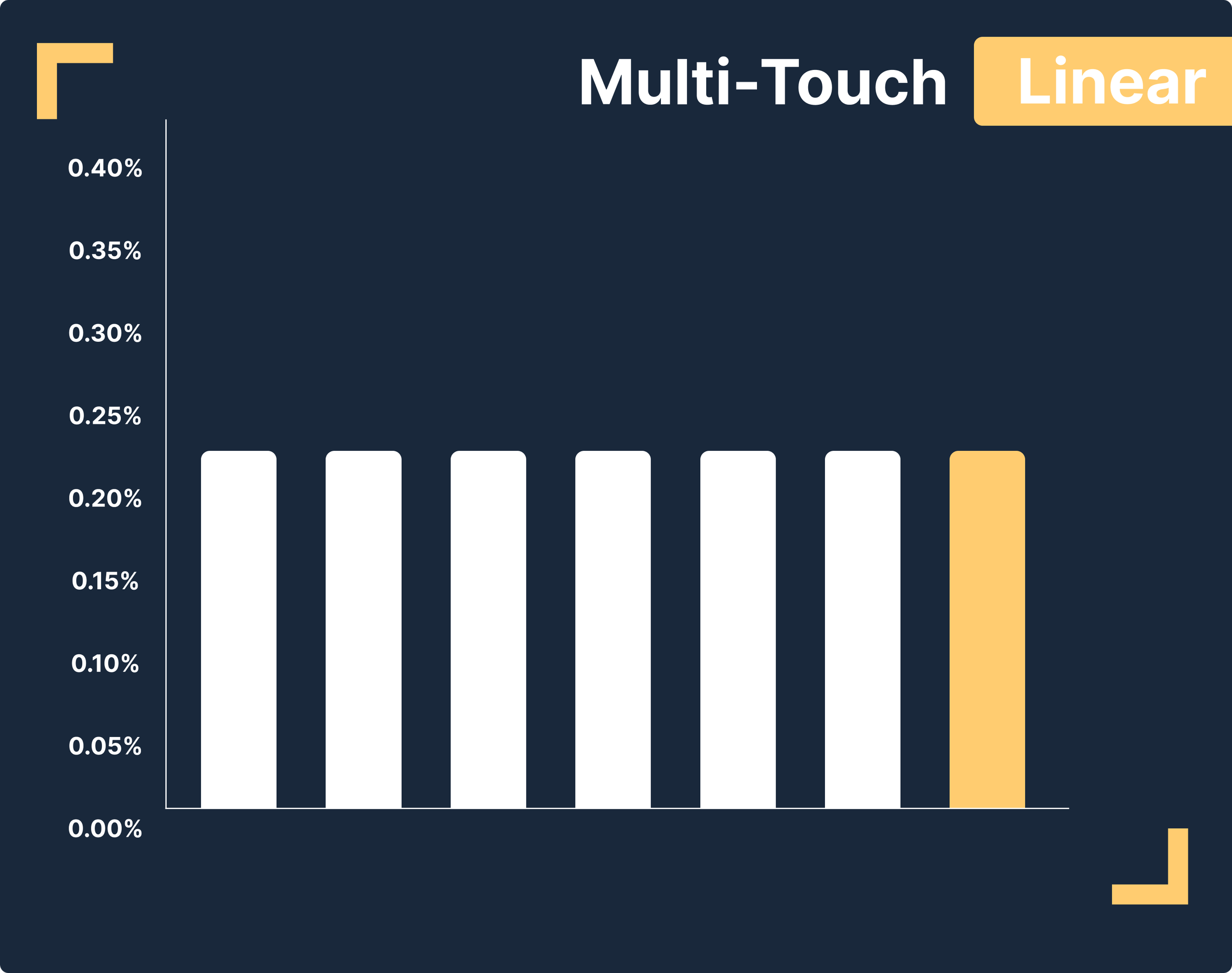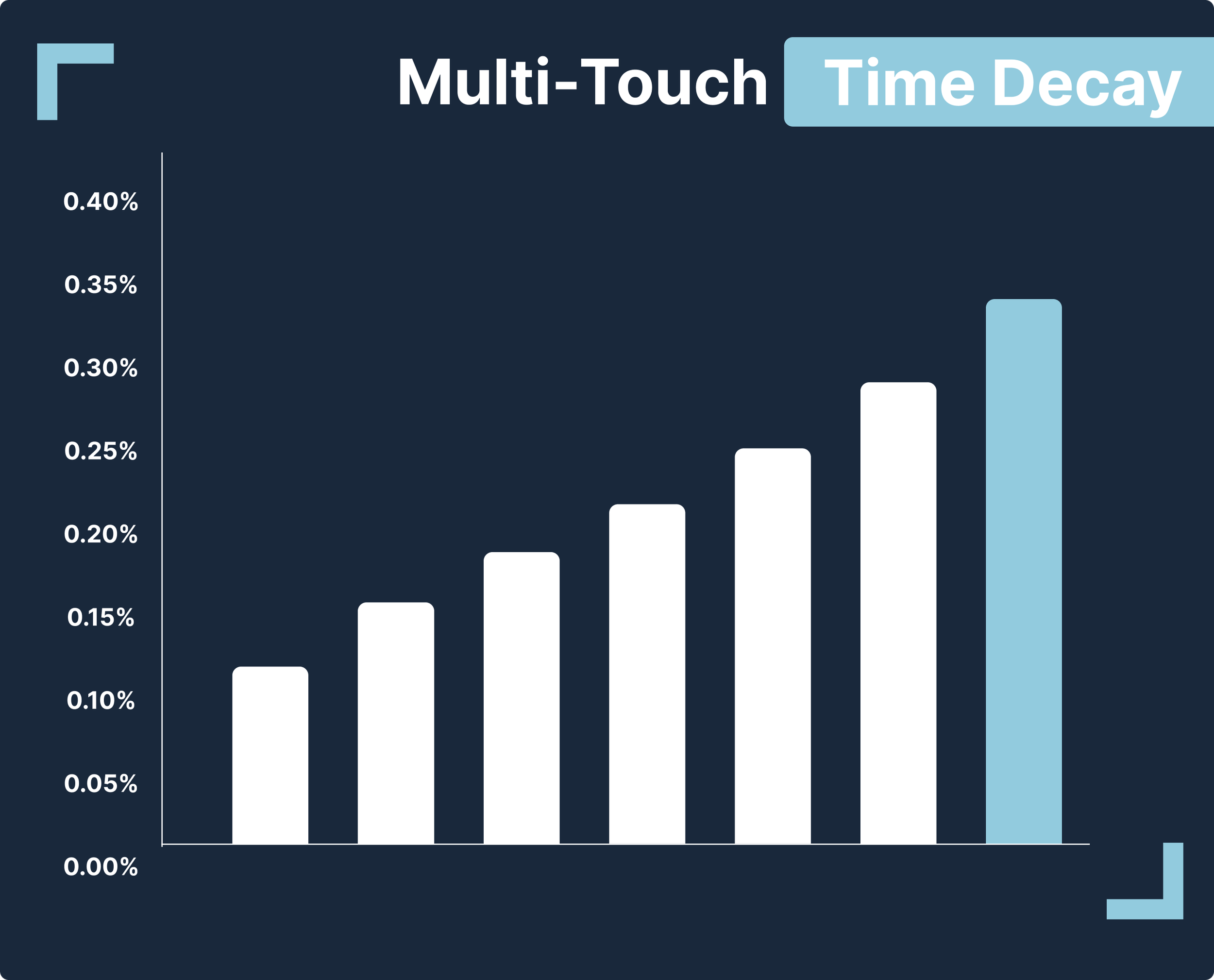What is Multi-Touch Attribution?
Whether you are a publisher, network, or podcast advertiser, mastering the intricacies of podcast ad advertising attribution is essential for understanding full-funnel campaign performance and maximizing ROI. This exploration focuses on the concept of multi-touch attribution: what it is, how, it works, and why it's important.
Multi-Touch Attribution: High Level
Multi-touch attribution is an analytical approach designed to assess the impact of each ad interaction a customer has on their journey toward making a purchase. Diverging from traditional models that assign conversion credit to a single interaction (either the first or last), MTA recognizes that multiple engagements across various campaigns, channels, and touch-points collectively drive the final conversion. At a high level, MTA allocates partial credit across each of the touch-points, offering a comprehensive view of a campaign's effectiveness. There are 2 main multi-touch models:
Linear Multi-Touch Attribution: Credit is evenly distributed across all podcast ads a listener is exposed to before making a purchase.
Time Decay Multi-Touch Atribution: The ads heard closer to the conversion receive the most credit with less credit tickling down to the first exposure.
Podcast-Specific MTA: How is it different?
Podcast-specific multi-touch attribution zeroes in on evaluating the effect of multiple podcast ads or campaigns that a listener encounters prior to converting. This focused form of MTA deviates from broader models by specifically attributing credit to individual ads or campaigns within the podcast landscape, spanning across shows, networks, or publishers. The aim is to pinpoint the podcast advertisements that significantly lead or contribute to conversions. Unlike broader multi-touch models that distribute credit across various marketing channels, podcast-specific MTA focuses on assigning credit to distinct ads or campaigns within the podcast ecosystem, across different shows, networks, or publishers. This method aims to uncover which podcast ads, in particular, contribute to conversions.
What about Multi-Touch Time Decay? (Podscribe’s default)
Multi-touch time decay attribution(Podscribe’s default attribution model) is a variant of MTA that assigns more credit to interactions closer to the point of conversion. It operates on the premise that ads heard nearer to the conversion event have a more significant influence on the listener's decision-making process. This model is particularly adept at capturing the decaying impact of ad exposure over time, making it invaluable for podcast advertising where the path to conversion can be indirect and extended.
How does multi-touch attribution work?
Podcast advertising presents unique challenges for attribution due to its audio nature and the absence of clickable links. However platforms like Podscribe navigate these challenges by offering modeling methodologies specifically tailored for the podcast medium. Here's how:
IP Matching: Podscribe matches the IP addresses of listeners engaging with a podcast ad (captured through a show's RSS feed prefix) to those making a purchase on an advertiser's website (tracked via an onsite Podscribe pixel). This method establishes a tangible connection between ad exposure and conversion.
Comprehensive Touchpoint Tracking: Utilizing listener IP tracking, Podscribe not only identifies if a conversion occurred post-ad exposure but also tracks exposure to other podcast episodes and ads along the conversion path, offering an in-depth exploration of the listener's journey. This allows for a multi-dimensional view of the listener's path to purchase.
Partial Credit Assigned: Acknowledging the collective influence of various ads on the conversion, with a platform like Podscribe you can see proportionately how credit is assigned to all relevant ads and episodes encountered by the listener, ensuring an accurate depiction of each touchpoint's contribution.
Using MTA with Podscribe
Podscribe's MTA methodology offers several advantages:
Comprehensive Attribution: By capturing all touchpoints across a listener's journey, Podscribe provides a holistic view of campaign effectiveness, beyond what traditional single-touch models can offer.
Customizable and Real-Time Modeling: Podscribe supports the ability to dynamically toggle between attribution models, allowing real-time insights into how different models affect attribution outcomes. This flexibility enables advertisers to adapt their attribution strategy to align with evolving brand dynamics and campaign objectives.
Strategic Optimization: Insights from MTA enable marketers to identify high-performing shows/networks and optimize their advertising spend, focusing on strategies that drive conversions.
Enhanced ROI: Understanding the role of each ad and touchpoint in the conversion path allows for more targeted and effective marketing strategies, ultimately enhancing campaign ROI.
Wrapping Up
In the world of podcast advertising, multi-touch attribution is not just a methodology but a strategic tool that unlocks deeper insights into campaign performance and listener behavior.
Podscribe's pioneering approach to MTA, with its emphasis on IP matching, comprehensive touchpoint tracking, and sophisticated attribution models, empowers marketers to navigate the complexities of podcast advertising with precision and confidence. As we continue to embrace the nuances of digital marketing landscapes, tools like Podscribe's MTA are invaluable in ensuring that every touchpoint, every listener's journey, is not just measured but optimized for success.



